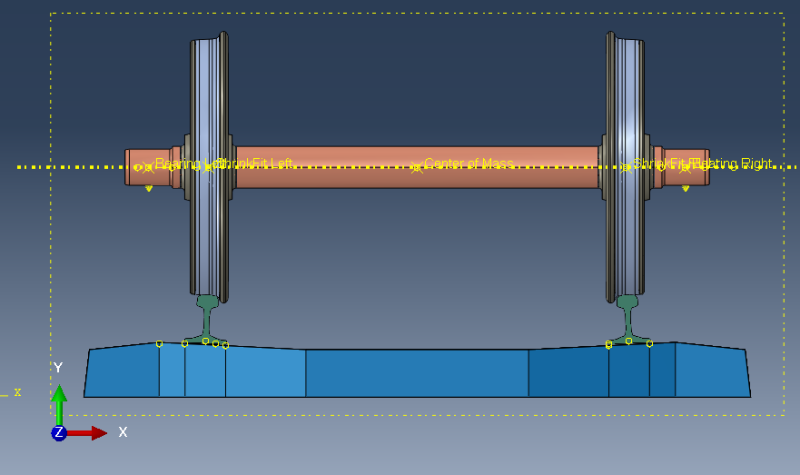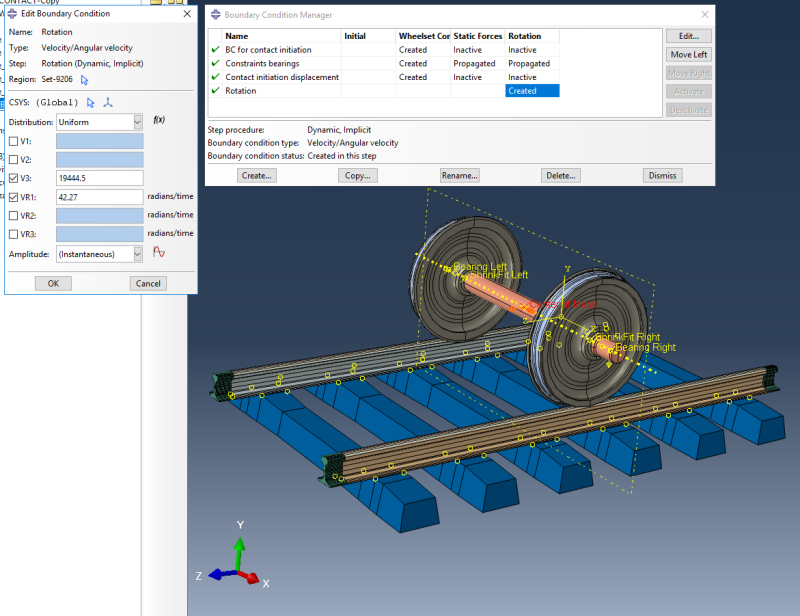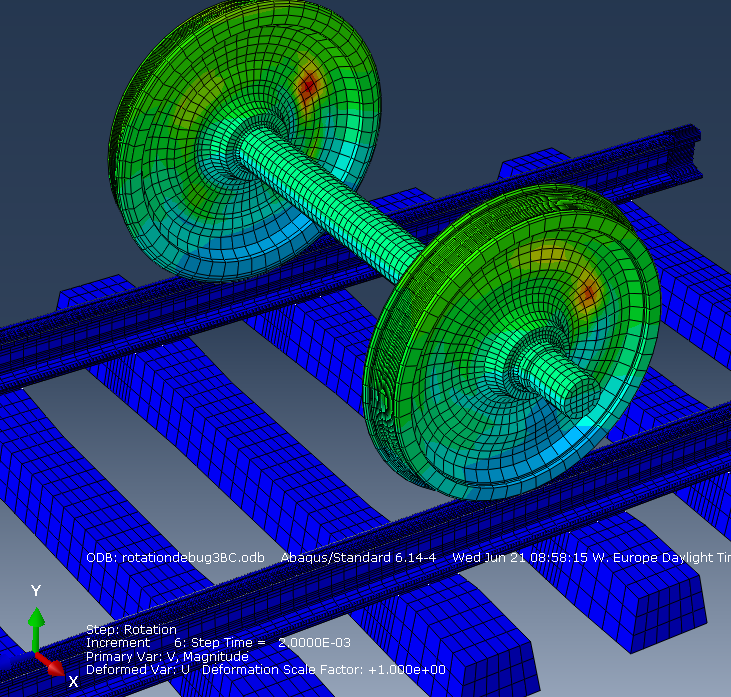Hi everybody,
I really need your help, i really have been struggling with this issue for weeks now.
I want to define a rolling condition of a wheelset travelling at 70Km/h on a rail track.
I have defined three steps:
1)Static step: contact initiation with an imposed vertical displacement of the wheelset;
2)Static forces initiation: removal of the displacement and contemporary application of the static loads at the bearings.
3)Dynamic/implicit step:
T=1s;
Increment size:0.0005s
NLGEOM ON
Velocity BC (rotation and longitudinal speed) on a RP coupled (distributed coupling) with the wheelset axis. Instantaneous load.
I have tried tons of strategies, but i never got a realistic rolling with good contact: either the axis deforms, the velocity field oscillates, the contact saturates completely.
I have attached some pictures of the model. The V field is after 0.002s of integration, and as can be seen it's not following the BCs.



I always have CSHEARF=(frictioncoefficient)*CNORMF.
You can also find attached the .inp file of the model.
Please i'm really looking forward for your help!
Regards,
Omar
I really need your help, i really have been struggling with this issue for weeks now.
I want to define a rolling condition of a wheelset travelling at 70Km/h on a rail track.
I have defined three steps:
1)Static step: contact initiation with an imposed vertical displacement of the wheelset;
2)Static forces initiation: removal of the displacement and contemporary application of the static loads at the bearings.
3)Dynamic/implicit step:
T=1s;
Increment size:0.0005s
NLGEOM ON
Velocity BC (rotation and longitudinal speed) on a RP coupled (distributed coupling) with the wheelset axis. Instantaneous load.
I have tried tons of strategies, but i never got a realistic rolling with good contact: either the axis deforms, the velocity field oscillates, the contact saturates completely.
I have attached some pictures of the model. The V field is after 0.002s of integration, and as can be seen it's not following the BCs.



I always have CSHEARF=(frictioncoefficient)*CNORMF.
You can also find attached the .inp file of the model.
Please i'm really looking forward for your help!
Regards,
Omar
